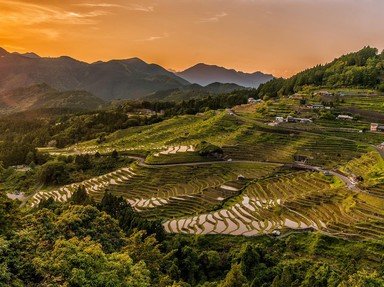Quiz Answer Key and Fun Facts
1. For our holiday, we flew into Tokyo Haneda Airport and spent the first three days in Tokyo. Apart from the major points of interest, we also visited this statue here. What is the name of this Japanese monster, which has a host of movies under its scaly belt and has been known to bring both danger and salvation?
2. Another rewarding trip was the one up this structure, all the way to the viewing gallery, which would have allowed us to see as far as Mount Fuji, had it not been foggy. What is the name of this Tokyo landmark?
3. After three days in Tokyo, we took a bullet train to Kyoto, the old imperial city and former capital of Japan. Compared to fast-lived, bustling Tokyo, Kyoto felt almost serene. The weather cleared up, and we visited this famous point of interest, Kinkaku-ji. By what name is it most commonly referred to in English?
4. While in Kyoto, we allowed ourselves one particular luxury: We booked a table at a very traditional Japanese restaurant and had this delicious and aesthetically pleasing 11-course Japanese dinner. The equivalent of Western haute cuisine, what is this cuisine style called?
5. After Kyoto, our next stop was a bustling metropolis not too far away. The second largest metropolitan area in Japan, a treasure trove for street food enthusiasts, and chosen as the venue for the 2025 Expo while we were there, which city am I talking about?
6. We went on an overnight trip to the Kii Peninsula to visit the huge temple settlement on Mount Koya (Koyasan), a UNESCO World Heritage Site, staying in one of the sub-temples providing lodgings not just for pilgrims but for tourists, too. Among the many sights in the town is the area pictured here: what is it?
7. After returning from Koyasan and taking a trip to Nara the day after, we hopped on another bullet train and traveled on toward Hiroshima. But we interrupted our journey for a few hours to visit this beautiful and famous white castle. Do you know which one it is?
8. After our stint visiting the white castle, we took the next train to Hiroshima. Hiroshima has recovered remarkably well from its traumatic past, which is preserved in an area known as the Peace Memorial Park. The building pictured is commonly called the Atomic Bomb Dome. Located almost exactly below the bomb's hypocenter, this structure was the only one left standing when the bomb was dropped, and it has been preserved exactly the way the bomb left it ever since. But what was the name of the building before it became a monument to peace and nuclear non-proliferation?
9. Our last stop before returning all the way to Tokyo was the sixth largest city in Japan, situated on the northern shore of Kyushu and generally regarded as the most western-oriented city of the country. Famous for Hakata ramen and the gigantic Canal City shopping mall and bordered on three sides by mountains and on one side by the sea, it is is not surprising that it has repeatedly been praised for its high quality of life. Which city is it?
10. Returning to Tokyo for the last two days of our trip, we took it slower than before, trying to decelerate to lessen the reverse cultural shock we would certainly experience on our return to Europe. That is why the last point of interest we visited was not a shrine or temple or museum but this quirky pop culture-related, steampunky public art sculpture. Named after the legendary Japanese animation film studio that gave us "My Neighbor Totoro," "Princess Mononoke," "Spirited Away," and "Howl's Moving Castle," this installation is generally known as the "Giant _____ Clock".
Source: Author
PearlQ19
This quiz was reviewed by FunTrivia editor
agony before going online.
Any errors found in FunTrivia content are routinely corrected through our feedback system.
